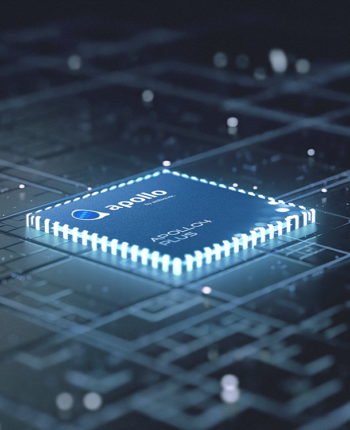Not known Details About Artificial intelligence developer

SleepKit is an AI Development Kit (ADK) that permits developers to simply Develop and deploy authentic-time slumber-checking models on Ambiq's family of extremely-small power SoCs. SleepKit explores a number of rest relevant responsibilities which includes sleep staging, and slumber apnea detection. The package involves a variety of datasets, attribute sets, effective model architectures, and a number of pre-properly trained models. The objective on the models is to outperform common, hand-crafted algorithms with economical AI models that still match throughout the stringent useful resource constraints of embedded products.
Ambiq®, a number one developer of ultra-minimal-power semiconductor alternatives that deliver a multifold rise in Vitality efficiency, is happy to announce it's been named a receiver with the Singapore SME 500 Award 2023.
AI models are like smart detectives that evaluate details; they seek out styles and predict in advance. They know their career not just by heart, but sometimes they can even choose a lot better than men and women do.
Push the longevity of battery-operated equipment with unprecedented power effectiveness. Take advantage of of your power price range with our flexible, minimal-power slumber and deep sleep modes with selectable amounts of RAM/cache retention.
Consumer-Generated Content: Hear your buyers who benefit evaluations, influencer insights, and social websites developments which can all tell item and service innovation.
far more Prompt: A petri dish by using a bamboo forest rising in it which has little purple pandas operating about.
SleepKit offers numerous modes which can be invoked for your presented undertaking. These modes might be accessed by using the CLI or instantly in the Python deal.
This serious-time model processes audio that contains speech, and eliminates non-speech sounds to higher isolate the primary speaker's voice. The technique taken With this implementation carefully mimics that explained during the paper TinyLSTMs: Economical Neural Speech Enhancement for Listening to Aids by Federov et al.
for images. Most of these models are active areas of exploration and we have been wanting to see how they build from the upcoming!
Our website takes advantage of cookies Our website use cookies. By continuing navigating, we suppose your permission to deploy cookies as comprehensive in our Privacy Plan.
A person this sort of modern model is definitely the DCGAN network from Radford et al. (shown below). This network usually takes as enter a hundred random figures drawn from the uniform distribution (we refer to these to be a code
Whether you are developing a model from scratch, porting a model to Ambiq's platform, or optimizing your crown jewels, Ambiq has tools to simplicity your journey.
Prompt: This close-up shot of the Victoria crowned pigeon showcases its striking blue plumage and red upper body. Its crest is made from sensitive, lacy feathers, whilst its eye is really a striking crimson shade.
The common adoption of AI in recycling has the possible to contribute appreciably to international sustainability goals, minimizing environmental affect and fostering a more round financial state.
Accelerating the Development of Optimized AI Features with Ambiq’s neuralSPOT
Ambiq’s neuralSPOT® is an open-source AI developer-focused SDK designed for our latest Apollo4 Plus system-on-chip (SoC) family. neuralSPOT provides an on-ramp to the rapid development of AI features for our customers’ AI applications and products. Included with neuralSPOT are Ambiq-optimized libraries, tools, and examples to help jumpstart AI-focused applications.
UNDERSTANDING NEURALSPOT VIA THE BASIC TENSORFLOW EXAMPLE
Often, the best way to ramp up on a new software library is through a comprehensive example – this is why neuralSPOt includes basic_tf_stub, an illustrative example that leverages many of neuralSPOT’s features.
In this article, we walk through the example block-by-block, using it as a guide to building AI features using neuralSPOT.
Ambiq's Vice President of Artificial Intelligence, Carlos Morales, went on CNBC Street Signs Asia to discuss the power consumption of AI and trends in endpoint devices.
Since 2010, Ambiq has been a leader in ultra-low power semiconductors that enable endpoint devices with more data-driven and AI-capable features while dropping the energy requirements up to 10X lower. They do this with the patented Subthreshold Power Optimized Technology (SPOT ®) platform.
Computer inferencing is complex, and for endpoint AI to become practical, these devices have to drop from megawatts of power to microwatts. This is where Ambiq has the power to change industries such as healthcare, agriculture, and Industrial IoT.
Ambiq Designs Low-Power for Next Gen Endpoint Devices
Ambiq’s VP of Architecture and Product Planning, Dan Cermak, joins the ipXchange team at CES to discuss how manufacturers can improve their products with ultra-low power. As technology becomes more sophisticated, energy consumption continues to grow. Here Dan outlines how Ambiq stays ahead of the curve by planning for energy requirements 5 years in advance.
Ambiq’s VP of Architecture and Product Planning at Embedded World 2024
Ambiq specializes in ultra-low-power SoC's designed to make intelligent battery-powered endpoint solutions a reality. These days, just about every endpoint device incorporates AI features, including anomaly detection, speech-driven user interfaces, audio event detection and classification, and health monitoring.
Ambiq's ultra low power, Lite blue high-performance platforms are ideal for implementing this class of AI features, and we at Ambiq are dedicated to making implementation as easy as possible by offering open-source developer-centric toolkits, software libraries, and reference models to accelerate AI feature development.

NEURALSPOT - BECAUSE AI IS HARD ENOUGH
neuralSPOT is an AI developer-focused SDK in the true sense of the word: it includes everything you need to get your AI model onto Ambiq’s platform. You’ll find libraries for talking to sensors, managing SoC peripherals, and controlling power and memory configurations, along with tools for easily debugging your model from your laptop or PC, and examples that tie it all together.
Facebook | Linkedin | Twitter | YouTube